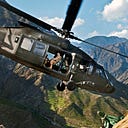Member-only story
The Soviet PT-76 May Be a Tank, But They All FLOAT.
Throughout the history of warfare, rivers and lakes have impeded an army’s mobility. This is particularly problematic for tanks which are heavier than most military vehicles. When existing bridges capable of supporting tanks are destroyed or too heavily defended to be worth the risk of assaulting directly, alternative water crossing methods must be sought. The first option is to construct pontoon bridges, which risks mass casualties when spotted by hostile artillery observers. The second option is to operate tanks with underwater wading equipment: they travel on the riverbed with an extended snorkel tower for the commander to maintain observation. However, deep wading gear imposes extra costs on each unit. Installing temporary floats on tanks to swim constitute a third choice; the most famous examples were the Sherman ‘DD’ tanks of the Operation Overlord landings at Normandy. Swimming apparatus is difficult to design and is prone to failure though. Laying bridges, readying a snorkel equipped tank or installing swimming gear are all time consuming. A fourth way is to produce a tank that swims without onerous sealing procedures or add on equipment: the Soviet PT-76 is the most successful practitioner of this philosophy.
The PT-76 (Plavayushchiy Tank: floating tank) owes its existence to the Soviet Army’s desire for light tanks capable of reconnaissance ahead…
